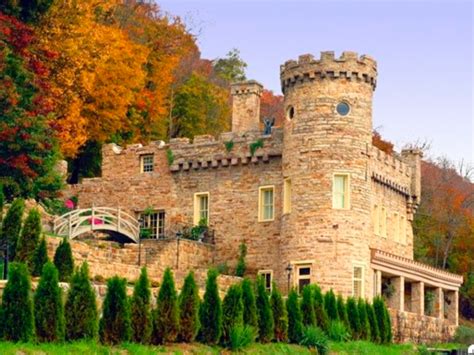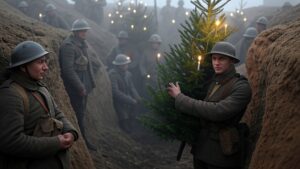GOTTA’ LOVE THOSE CASTLES
“Many a book is like a key to unknown chambers within the castle of one’s own self.”
Franz Kafka
“This tower, patched unevenly with black ivy, arose like a mutilated finger from among the fists of knuckled masonry and pointed blasphemously at heaven. At night the owls made of it an echoing throat; by day it stood voiceless and cast its long shadow.”
Mervyn Peake
Titus Groan (Gormenghast #1)
“There are so many stories about my castle and about my life there that you are at liberty to believe whatever pleases you most.”
Rosa Suit[1]
The most recent stop in Ima and my grand post-retirement tour finds us spending a couple nights in the quaint Country Inn at Berkeley Springs, West Virginia. The inn is located about 35 minutes west of where my oldest daughter—Kimberly—lives and about 100 miles from Washington D.C. We have passed by the inn several times over the years and have always wanted to stay here. The inn has a charm all its own; a Norman Rockwell lobby in front where two ladies sat by the fireplace knitting, a spa for Ima’s massage, old threadbare carpets in every hall, and old-style paintings filling every possible wall space.
In other words, just our kind of place.
The first day after checking in, Ima and I took a tour of the warm mineral springs adjacent to the inn. The mineral springs—first used by the local Indian tribes for medicinal baths—gives the place its historical uniqueness. The original springs bear the name of English colonial administrator Lord Fairfax and visitors can still see the stone bathtub used repeatedly by George Washington. In early January 1862, Confederate General Thomas “Stonewall” Jackson led four brigades into the town—called Bath at the time—and occupied it. There is a building where you can get a Roman bath (for a modern-day price) and locals still draw clear spring-fed water using large blue, Culligan-man plastic jugs.
The town is a mixture of charming antique and old-fashioned artsy-specialty shops blended with streetside hippie-escapee establishments with names like The Naked Olive and other stores displaying a variety of New Age paraphernalia: the former movie house, for example, now called the Star Theater, is playing a steady diet of Zombie movies for the entire month of October. The town streets will be packed full of booths featuring local handicrafts starting tomorrow (Ima and I are getting away just in time): the Apple Butter Festival, held for the first time since the Covid lockdowns, is expected to draw some 30,000 visitors this weekend, according to people we talked to at the Visitor’s Center run by the Chamber of Commerce.
Our quick stop at the town visitor’s center was an interesting experience. They were getting ready for the impending festival, and the lady—glancing repeatedly at her Apple wristpod—responded to nearly every one of our questions by saying “if you go to our website we cover a lot of that.” In the end, we picked up a couple brochures and bought a couple jars of apple butter for Bethany, and then left with as many questions as we had before.
It was a crisp fall day. On the way back down the hill, where a couple war memorials stand in a square near the courthouse, I snapped a couple autumn-like pictures: featuring bright orange pumpkins, reddish-colored trees and an assortment of colorful chrysanthemums and other late season flowers.
In the distance, just above the tree line that provided a backdrop for the springs, I noticed what looked like a castle turret. A castle in Berkeley Springs? I had briefly noticed a placard in the inn’s lobby talking about a castle of some sort. But I assumed it was hid away in the mountains outside of town.
Walking past the closed museum (it is run by volunteers that open it when convenient for them), I noticed a road going up the hill. There was a sign that read: “STOP. Road has no outlet and no place to turn around. The GPS is wrong.”
Who can resist a sign like that?
Nearly all of my worthwhile adventures in life begin with me ignoring STOP signs.
Ima opted for the safer course: she walked down the street to a coffee house she had noticed previously.
So, I began to climb. And climb. Through the trees I noticed the roofs of the buildings of the mineral springs complex far below. Just when I was ready to turn back, I observed a stone flight of stairs, covered with autumn-colored leaves, heading up the hillside. I started up the rocky staircase and soon arrived at a small turret-type, stone structure. The metal doors were chained shut. When I cleared the trees, I saw it—a Norman-style castle standing further up the hillside.

I love castles!
When I was a kid, we took a class visit to the Loveland Castle, located outside of Cincinnati, Ohio on a beautiful piece of land along the scenic Little Miami River. Today, the castle (also known as Chateau Laroche) is a museum. The castle was the brainchild of a fascinating gentleman—Harry D. Andrews—who was inspired by the European castles and chateaus he had seen during the First World War. He later became a medievalist and hired a number of boys (he was also a Boy Scout leader) to help with the construction of the walls. What marvelous memories I have of that place! I visited there several times over the years and the castle, undoubtedly, played a huge role in my subsequent love for history in general, and castles in particular. At night, I would dream of being king of the castle, surveying my kingdom below, with a hunting hawk clutching my gloved hand with its talons.
But alas, all dreams start to fade over time. As Andrews became older, and could see his legacy slipping through his fingers, he started taking construction shortcuts. During my last visit to the castle, for example, the slipshod work on the outer works was obvious. Much later, the castle gained notoriety as a hangout for the local chapter of the Ku Klux Klan.
“Sigh.”
My next experience with castles was during my service experience in the Vietnam War. We were stationed at Kadena AFB in Okinawa and lived—along with Rich A. and James K.—in the Kishaba Apartments, near Fort Buckner. Behind the apartment was an old Japanese castle, in which numerous Japanese troops were entombed during the American invasion of the island in the closing months of World War II.
During that same time frame, Rich, Gary K., and yours truly, were selected to an all-island softball team to participate in the All-Asia Softball Tournament at Misawa AFB, Japan. We spent a day or two in Tokyo on our way to the tournament and I visited the spectacular grounds of the Tokyo Imperial Palace (Edo Castle) in Chiyoda, Tokyo.
What an experience!
In later years, during my time at Alice Lloyd College, I took a research trip to Germany and convinced my sister Debby to come along. We rented an old English Ford (on the Autobahn I had the accelerator buried to the floorboard, with the engine whining like a sewing machine on steroids, as Mercedes and Audis whizzed by us like we standing still), and drove down the Romantische Strasse into Bavaria. We stayed at Zimmerfrei along the way (a rented bedroom with breakfast provided by war widows). I was tracing the steps taken in Germany by the fiery Cossack military leader General Prince Pavel Rafalovich Avalov Bermondt—the subject of my thesis paper—some fifty years earlier, during the early Hitler days. My research quest led us to West Berlin (the city was still divided then), but while in Germany we also visited Neuschwanstein Castle,[2] the nearby enchanting Hohenschwangau Castle, and various castles along the Rhine River.
Did I happen to mention how much I love castles?
But back to the Berkeley Castle. Like all castles, I suppose, I discovered the Berkeley Castle had its own interesting—and at points—tragic history. The castle’s origins trace back to a love affair. Colonel Samuel Taylor Suit (1832-1888), a wealthy Maryland businessman and Civil War veteran,[3] met (at the mineral springs close to Country Inn where Ima and I are now staying) and fell in love with an attractive teenager, Rosa Pelham, daughter of an Alabama Congressman. After several unsuccessful attempts to woo her, Rosa agreed to the Colonel’s entreaties only if he would build her a castle. The two—now hand-in-hand—climbed the hillside above the quaint town of Bath (present-day Berkeley Springs) and staked out a location. Days later they were married: Suit was 51 and Rosa was 21.
Before I talk about the castle itself, I discovered that Colonel Suit’s life history is fascinating. He was the son of an innkeeper and born in Bladensburg, Maryland. As a young man, Suit actually made his fortune in Kentucky, in the whiskey distillery business, becoming an honorary Kentucky “Colonel” in the process. (One day I may write a missive about the Kentucky Colonels and the process by which one becomes a Colonel, perhaps beginning with the most famous colonel of them all—“Colonel” Harland David Sanders of Kentucky Fried Chicken fame). Suit’s first wife, from Kentucky, died in childbirth along with the baby. Suit subsequently moved to New York City prior to the Civil War and obtained a seat on the New York Stock Exchange, remarried (the daughter of a wealthy insurance magnate), and had a son. The marriage, however, was contentious.
Shortly after the Civil War (in 1867) Suit returned to Maryland and bought a 450-acre estate near Washington D.C., (the area is called Suitland to this day) and built a distillery and invested in railroads. The estate reportedly was visited by the likes of President Ulysses S. Grant and hosted both parties attempting to negotiate the wartime Alabama claims. From 1873-1877, Suit was a Maryland state senator. But in 1876, the estate was destroyed by fire and Suit was forced to declare bankruptcy.
During the period Suit was rebuilding his wealth (the Suit estate itself was never rebuilt) and bouncing back from the divorce of his second wife, Suit met young Rosa at the mineral springs spa that he visited frequently.[4]
At any rate, Colonel Suit reportedly hired one of America’s most famous architects, A.B. Mullett, to design and build the project.[5] The foundation was laid in 1885 and 100 German masons employed for the task, which took six years to complete. Each silica sandstone block was hand-cut from a local quarry and carried to the site by horse and buggy. Unfortunately, Colonel Suite did not live to see the completion of his castle[6] and stipulated in his will that his wife was to finish the project (in order to inherit his fortune). Rosa finished the project. (When Ima and I visited nearby Cool Font Resort for dinner, I noticed a beautiful watercolor print of the castle with autumn colors, with the title “Rosa’s Castle”).
It did not take long, however, for Rosa (an attractive widower and mother of three children) to run through her late husband’s fortune. She would host lavish parties at the castle, trying to impress the wealthy Washington elites, sometimes even renting entire railroad cars for her guests—who would arrive at Bath’s new tiny train station—and then put them up in local hotels for weeks at a time. Rosa lived a lavish lifestyle and hired orchestras for her parties and imported chefs to prepare sumptuous meals.
I once heard Margaret Thatcher say that socialism is a fine system until you run out of someone else’s money to spend. The same could be said for socialite debutantes like Rosa: by the time she was 50 she had spent all the money. In the early 1900’s, the castle was sold at a public auction and has passed through several hands since. Rosa, a notorious chain-smoker, moved to a small house and raised chickens until her son rescued her and moved her to Idaho where she would live out her final days.[7]
The post-Rosa story for the castle is a checkered trail. It was repeatedly offered at public auctions, neglected, and overgrown by weeds and vines for years at a time, at one time served as a boys’ camp retreat, owned alternatively by well-intentioned elites and social snobs, and only periodically opened to the public. More recently, the castle was bought in February 2020 by the VDARE Foundation (the tax-exempt affiliate of the anti-immigration organization VDARE). The purchase price was $1.4 million dollars (source of funds unknown) and the purchase was vigorously opposed by progressive elements in Berkeley Springs, despite repeated assurances from organization officials that they would be a good community citizen. (We got a small taste of this animosity for the new owners during a charming chat with a local resident at the Ice House Co-op Gallery). As a result, many town residents are adopting a post-pandemic wait-and-see attitude.
Today, as a result, the castle is privately owned and the closest you can get to the castle is the large iron gate out front.
I went to see the castle one last time on our final evening in Berkeley Springs. I wanted to take a couple nighttime pictures. With me was Kimberly, her husband Jason and Jeemes 2. They had come over to join us for dinner. In the headlights, Jeemes 2 and I walked up the driveway toward the huge iron gate. I pointed out to him that the castle is protected by four fierce-looking gargoyles (added by a later owner), with glowing red eyes. “Wow, cool” was all he said. He had no way of knowing that for some reason the gargoyles reminded me of the grotesque masks, statues, and hellish figures at the Tiger Balm Gardens in Singapore (an eerie Asian theme park that predated Disney by several decades).
Perhaps it is fitting, somehow, that the gargoyles protect the grounds.
The Berkeley Castle is one of over 100 officially listed castles in the United States, most of which are subject to more than a fair share of stories, speculation, and misinformation. Rosa’s cottage-castle is no exception. There have been rumors of Rosa suitors thrown from the battlement, secret underground tunnels, sex orgies, apparitions of Rosa and Colonel Suit seen in several of the castle’s 15 rooms (including a dungeon), as well as repeated accounts of ghosts lingering about the premises.[8]
But then, what is a castle for?[9]
[1] This is the final quote in the short book by Jeanne Mozier, The Story of Berkeley Castle: What’s True and What’s Not, High Street Press, Berkeley Springs, West Virginia, 2018. I bought the book from a small candy shop in Berkeley Springs. The author, noted for her support of local artisans and books on local history, passed away in 2020.
[2] Neuschwanstein Castle, built in rugged hills near the town of Fussen in southwest Bavaria is the most splendid of all castles and, reportedly, the inspiration for Walt Disney’s theme park castles. Interestingly enough, the castle was built long after castles served any military purpose but was rather commissioned by King Ludwig II of Bavaria as a retreat in honor of the German writer Richard Wagner.
[3] According to Mozier’s book there is no evidence that Colonel Suit fought for either side in the war but rather—she asserts—sat out the war in New York pursuing commercial interests. She includes the misinformation about Suit’s military background in a section debunking many of the myths and misinformation about the castle, Colonel Suit and Rosa.
[4] According to Mozier’s book, there is uncertainty why Suit was at the mineral springs and whether he met Rosa there. She speculates that Colonel Suit was interested in the prospects of a railroad spur running from the nearby B&O rail line along the Potomac River or, perhaps, to start a distillery with other elite families in the town. As far as I know, there is no good biography of Colonel Suit, and Mozier’s book provides only a brief overview of his life and accomplishments. For a piece dealing with the whiskey distillery angle, see Jack Sullivan, “The Life and Loves of S.T. Suit: A Jug-Filler’s Story,” Bottles and Extras (Federation of Historic Bottle Collectors), (Spring 2005), pp. 66-69.
[5] Alfred Bult Mullett (1834-1890) was a famous British-American architect responsible for the design of several federal buildings. There is some disagreement as to the role—if any—played by Mullett in the actual design of the castle. Mozier’s book discusses at length the issue of who designed the castle and the circumstances (including an initial drawing on a dinner napkin).
[6] Colonel Suit apparently only spent one summer season at the castle before his death in his primary residence on New Jersey Avenue in Washington D.C. He died there on October 1, 1888 of “dropsy of the heart” and is buried next to his father at St. Barnabas Church in Oxen Hill, Maryland.
[7] Martha Rosa Pelham Suit (she later changed the spelling of her last name to avoid creditors), died in Idaho on February 19, 1947.
[8] Mozier spends most of her book debunking each of these.
[9] This missive has been patchworked together from several sources: Mozier’s book, a placard in the lobby at the County Inn in Berkeley Springs (which piqued my interest in the castle), various historical placards along the town’s streets, several delightful conversations with town residents, and a variety of Wikipedia articles.




